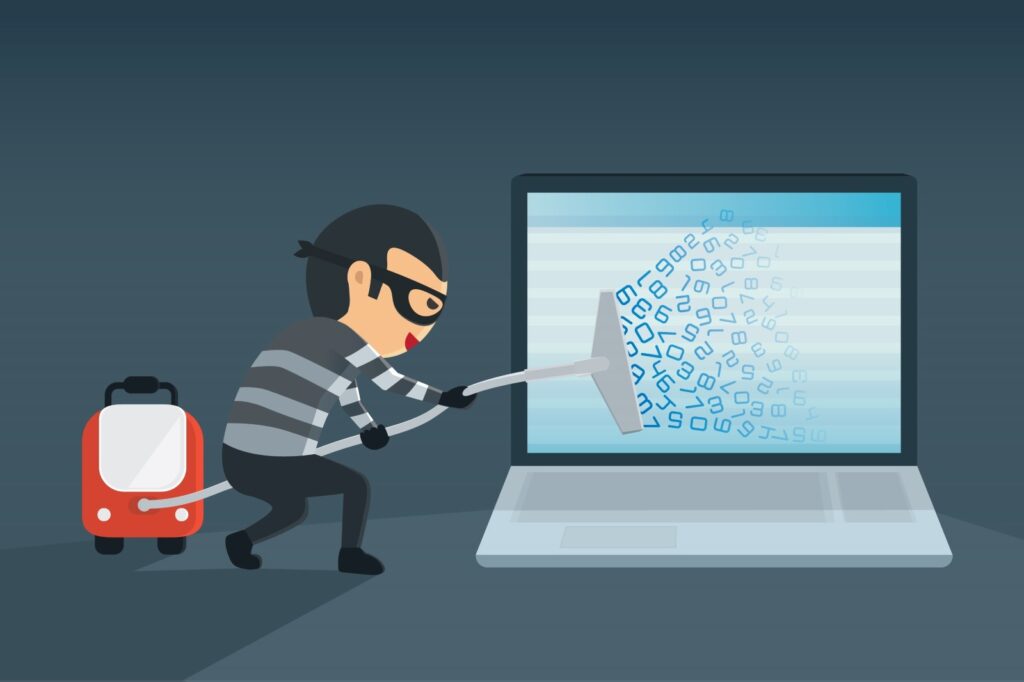Assessing the Threat of Using Portable Devices to Access Banking Services
In an increasingly digital world, the convenience of accessing banking services through portable devices like smartphones and tablets has become a norm for many. While this convenience has revolutionized how we manage our finances, it also brings forth a new set of security challenges that customers and financial institutions must address. In this blog post, we will delve into the threats associated with using portable devices to access banking services and explore ways to mitigate these risks effectively.
UpGuard stated, A cyber or cybersecurity threat is a malicious act that seeks to damage data, steal data, or disrupt digital life in general. Cyber threats include computer viruses, data breaches, Denial of Service (DoS) attacks, and other attack vectors.
The Convenience of Portable Banking
Before we delve into the threats, let’s acknowledge the benefits of portable banking. Accessing your bank accounts and performing transactions on the go is undeniably convenient. Whether you’re checking your account balance, transferring funds, or paying bills, the ability to do so from your smartphone or tablet offers unparalleled ease.

The Threat Landscape
While portable banking offers convenience, it opens up a broader attack surface for cybercriminals. Here are some of the critical threats associated with using mobile devices for banking:
- Phishing Attacks: Phishing attempts can target users through emails, text messages, or fraudulent websites. Unsuspecting users may reveal sensitive information, such as login credentials, to malicious actors.
- Malware and Viruses: Malicious software can infect mobile devices, enabling cybercriminals to steal financial information or intercept communication between the user and the banking app.
- Public Wi-Fi Risks: Public Wi-Fi networks can expose your device to security vulnerabilities. Hackers often lurk on these networks, intercepting data transmitted between your device and the bank’s servers.
- Lost or Stolen Devices: Physical theft of a smartphone or tablet can result in unauthorized access to your banking apps and accounts.
- Weak Passwords and Authentication: Inadequate password protection and two-factor authentication can make it easier for assaulters to access your accounts.
Mitigating the Risks
While the threats are accurate, there are several steps you can take to minimize the dangers associated with portable banking:
- Install Official Banking Apps: Download banking apps only from trusted sources like official app stores to reduce the risk of downloading malicious apps.
- Keep Software Updated: Regularly update your device’s operating system and banking apps to patch vulnerabilities and protect against known threats.
- Use Strong Passwords: Create complex, unique passwords for your banking accounts and enable two-factor authentication when available.
- Avoid Public Wi-Fi: Use a secure, private network for banking transactions whenever possible. If you must use public Wi-Fi, consider using a (VPN) for added security.
- Enable Device Locks: Use PINs, fingerprints, or facial recognition to lock your device, and enable remote tracking and data wiping features in case your device is lost or stolen.
- Be Wary of Phishing: Never click suspicious links or download attachments from unknown sources. Verify the authenticity of emails or messages claiming to be from your bank.
- Monitor Your Accounts: Review your account statements and transaction history for unauthorized activity. Report any discrepancies to your bank immediately.
Wrapping up:
While the convenience of portable banking is undeniable, it is essential to be aware of the associated security threats and take proactive measures to protect your financial information. By following best practices, using secure devices and networks, and staying vigilant against potential threats, you can enjoy the benefits of portable banking while keeping your financial data safe and secure.
Remember, a little caution goes a long way in safeguarding your economic well-being in the digital age. For more insightful blogs, visit auxin.io.







